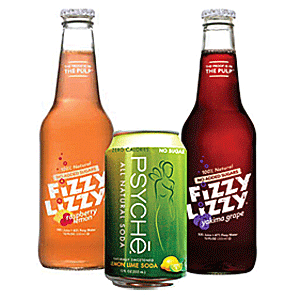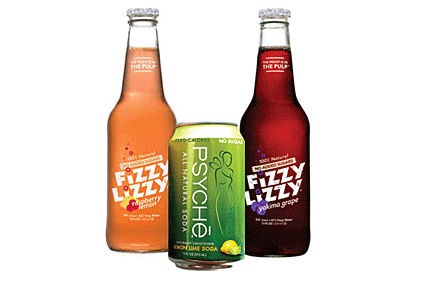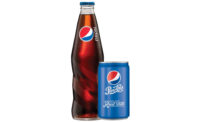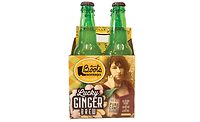In its more than 140-year history in the beverage marketplace, White Rock Beverages has gone through its own evolution. Founded as a mineral water company in 1871, the company added mixers to its portfolio in the middle part of the last century, says Larry Bodkin, president of the Whitestone, N.Y.-based company.
When he was a kid, Bodkin remembers the flavored carbonated beverages like Cream Soda and Black Cherry as being a focus in the market. But within the last 10 years, that focus has shifted to mixers and seltzers, Bodkin notes.
Bodkin adds that White Rock’s mixer sales continue to increase with an average of 10 percent annual growth in the last 10 years. Although its flavor lineup remains flat, the company’s specialty carbonated soft drink (CSD) brands, Sioux City and The Olde Brooklyn, are performing well, he says. Sioux City and The Olde Brooklyn offer a craft appeal because of a number of characteristics, such as their glass bottle packaging with embossing and their use of pure cane sugar and other high-quality ingredients, Bodkin says.
“We’ve been able to continue to grow those products in recent years, and we project to be able to continue to do that,” he adds.
Fizzy future
Although White Rock has experienced success throughout its portfolio, the company explored new territories earlier this year with the acquisition of the sparkling juice brand Fizzy Lizzy.
“We saw this opportunity as a way to get into a new business in our hundred-something years that we’ve been in business,” Bodkin says.
Acquired in March 2013, Bodkin says that the company approached the first six months with a wait-and-see methodology.
“We decided for the first six months we weren’t going to do anything,” he explains. “We were just going to learn as much as we could about the brand — talk to their customers, talk to their consumers, go to tradeshows, things like that. What we found out was people really like the stuff. They like the taste, they like the packaging, they like the story about [founder Elizabeth Morrill], so at this point, we’re not really changing anything.”
Although the company isn’t initiating any formulation or packaging changes, it has tackled the brand’s supply chain by reducing the number of suppliers from 27 to about 12, Bodkin says.
“We simplified all of the manufacturing and sourcing of the raw [materials to] where we’re bringing the purchasing in with our vendors that we have long-term relationships with,” he says. These partner vendors offer White Rock reliable supplies at a good price, he adds.
White Rock also has been able to capitalize on synergies for its distribution models. Because Fizzy Lizzy, like its Sioux City brand, is sold through natural specialty distributors, the company can work with the same distributors, brokers, and many of the same retailers to stock both products.
At the moment, the company does not have any plans for Fizzy Lizzy line extensions and will maintain the seven varieties — Pineapple, Yakima Grape, Raspberry Lemon, Grapefruit, Fuji Apple, Cranberry and Tangerine Passion Fruit — but it might consider adding another packaging format.
“We’re thinking about bringing the product into cans,” Bodkin explains. “There’s new regulations that came out with respect to schools that if we put the product in cans, we could possibly pursue distribution in that area.”
What’s in a name?
The acquisition of Fizzy Lizzy wasn’t White Rock’s only addition to its portfolio this year. The company also announced the test launch of Psyche, a stevia-sweetened CSD that is named after the company’s iconic girl kneeling on a rock who represents “purity” for the company. However, the trademark symbol was updated to have her standing for a modernized version.
Bodkin explains that the idea to launch Psyche came from the company’s mission to continually develop lighter and healthier products.
“We thought the idea of a natural, zero-calorie-based soft drink was exciting,” he says. “We had to do a lot of research and figure out … [how] to do it in a way that would taste good. We spent a lot of time and effort on the taste with natural masking agents. We had to make sure that we could produce a product that we had confidence in [and] that the quality would be there.”
Designed to help convert traditional CSD drinkers to the product, Psyche is available in four core flavors: Cola, Orange, Root Beer and Lemon Lime.
“We will definitely expand beyond those four, but we felt for starters that those four would be something that would appeal to everybody,” Bodkin says. “They’re excellent tasting, and I would think if some things go reasonably well, we’ll have more flavors for next year.”
Currently available in New York and some international markets, Psyche will have its first major distribution push in the first quarter of 2014 in the Northeast, Southeast and Midwest, Bodkin adds.
Although Psyche and Fizzy Lizzy are a smaller part of the business, Bodkin hopes these natural offerings will complement its other natural products, like the seltzer line.
“This is part of a conscientious effort to develop natural and healthier products,” he says. “Right now, seltzers are a big part of our business. Psyche and Fizzy Lizzy are small, but what we’re hoping [is] over time ... they will become a more meaningful part of our business.”







